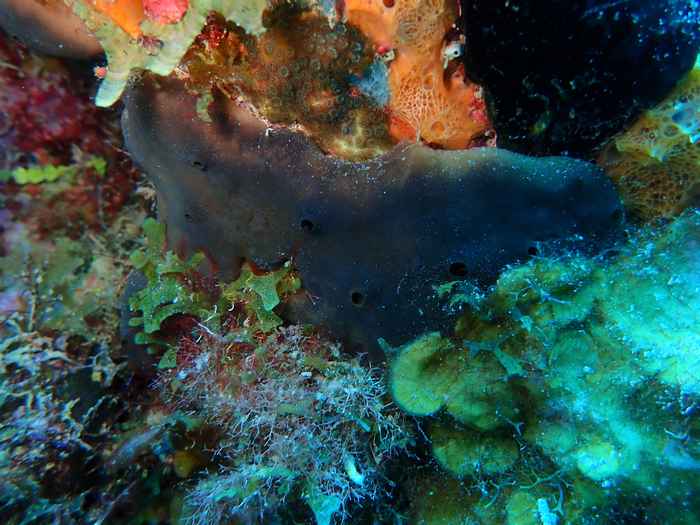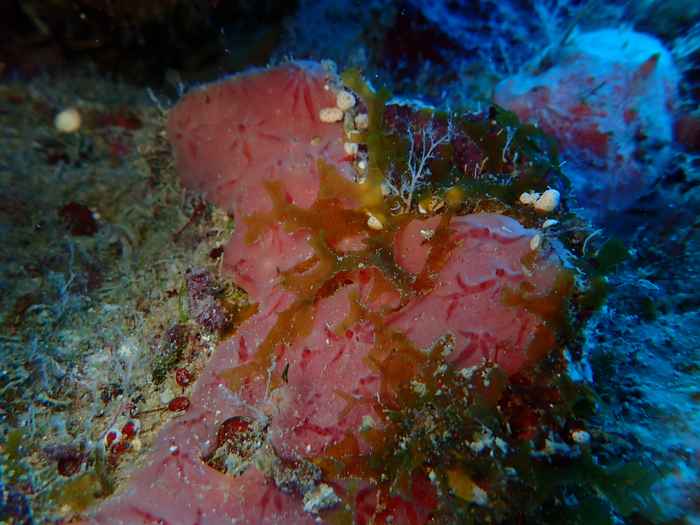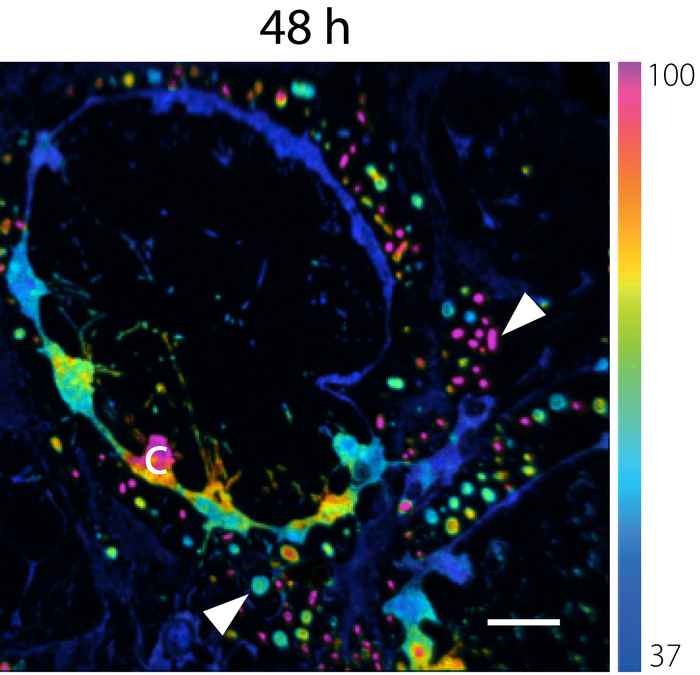How sponges dine in a marine desert
Visualizing the process of digestion in the oldest known animal-microbe symbiosis
23 February 2021
Sponges are the oldest known animal–microbe symbiosis and are found abundantly across the globe, from the canals of Amsterdam to kilometre-deep canyons on the ocean floor. They play an essential role in recycling resources in nutrient-poor ecosystems, such as coral reefs.


Food sources
Sponges are extremely effective filter feeders that can tap into food sources that are inaccessible to many other organisms, such as dissolved organic nutrients. Aside from ‘eating’ bacteria and other small particles residing in the seawater, sponge cells can ‘drink’ dissolved organic nutrients, such as sugars.
‘The collaboration between the sponge host and their abundant microbiome in processing food was a mystery,’ says researcher Meggie Hudspith, who performs her PhD research at the UvA Institute for Biodiversity and Ecosystem Dynamics. ‘Our study used cutting-edge imaging techniques (NanoSIMS) to trace the uptake of dissolved and particulate organic matter by sponges and their symbionts over time.’

Microbial symbionts
The authors found that microbial symbionts were actively involved in the processing of dissolved organic nutrients, but that the sponge filter cells were the primary sites of eating and drinking nutrients. Over time, nutrients were transferred from the sponge cells to their symbionts. This indicates that microbes recycle the waste products of the host, ensuring that limited nutrients are retained by the sponge and not expelled into the environment.
‘Our findings shed light on the nature of evolutionarily ancient host-microbe symbioses, and further disentangle how sponges can survive in our oceans for more than 600 Million years. They also reveal how sponges can thrive in nutrient-poor ecosystems such as coral reefs: with symbionts acting as 'mini-recyclers', as important nutrients are retained by the sponge rather than being lost to the environment,’ concludes Hudspith.
Publication details
Meggie Hudspith, Laura Rix, Michelle Achlatis, Jeremy Bougoure, Paul Guagliardo, Peta L. Clode, Nicole S. Webster, Gerard Muyzer, Mathieu Pernice and Jasper M. de Goeij: ‘Subcellular view of host–microbiome nutrient exchange in sponges: insights into the ecological success of an early metazoan–microbe symbiosis,’ in Microbiome 9, Article number: 44 (2021). DOI: https://doi.org/10.1186/s40168-020-00984-w